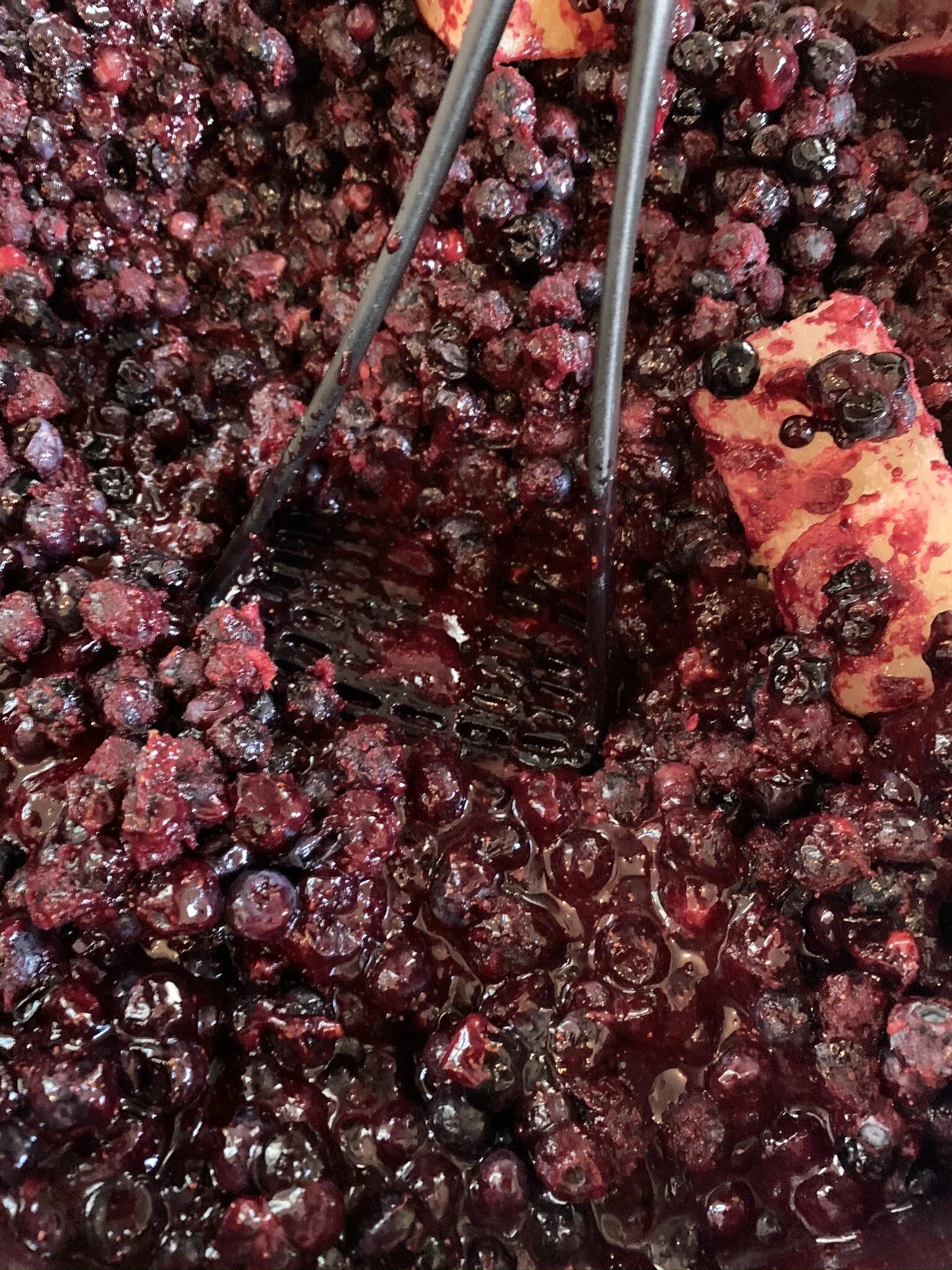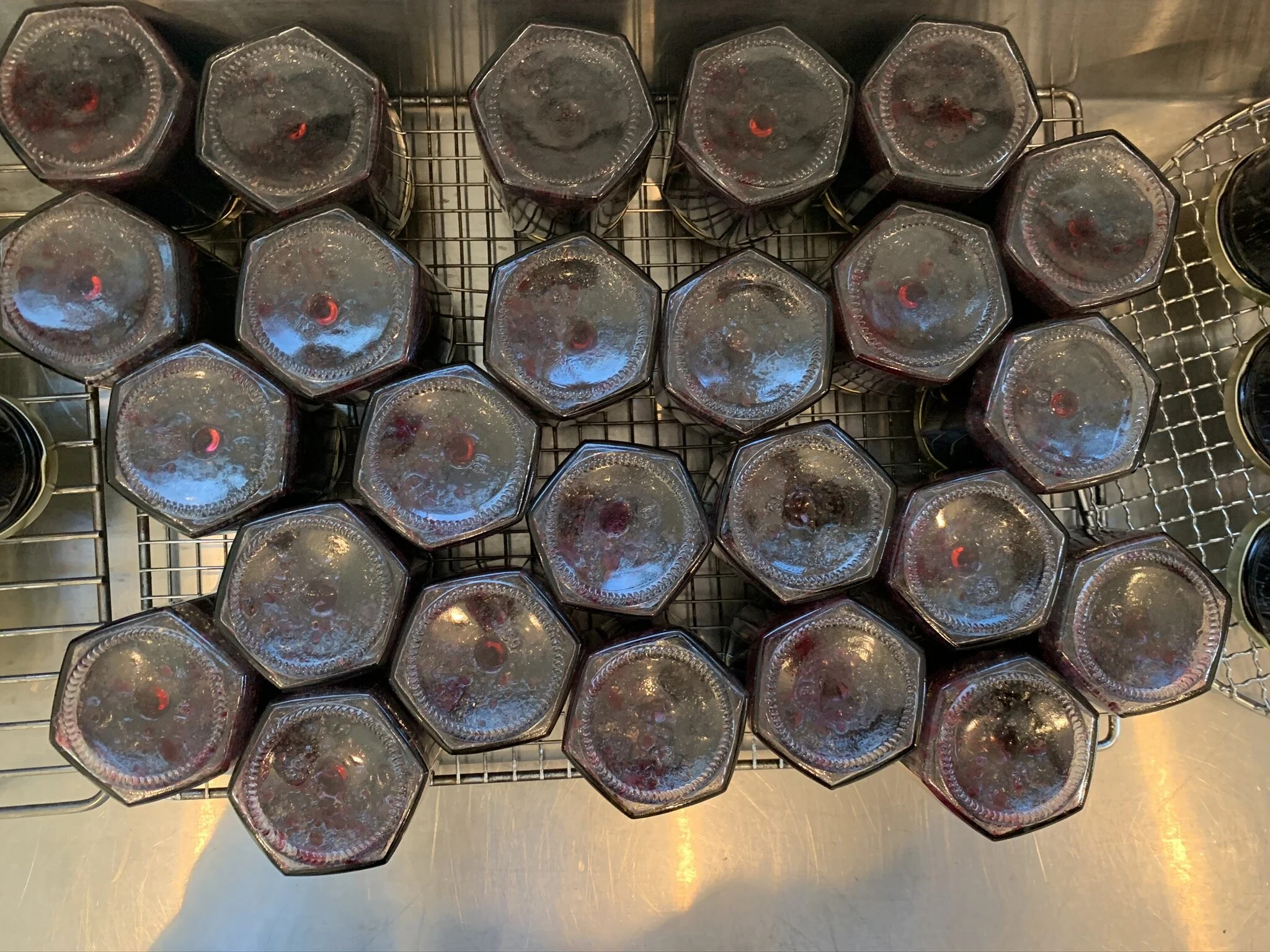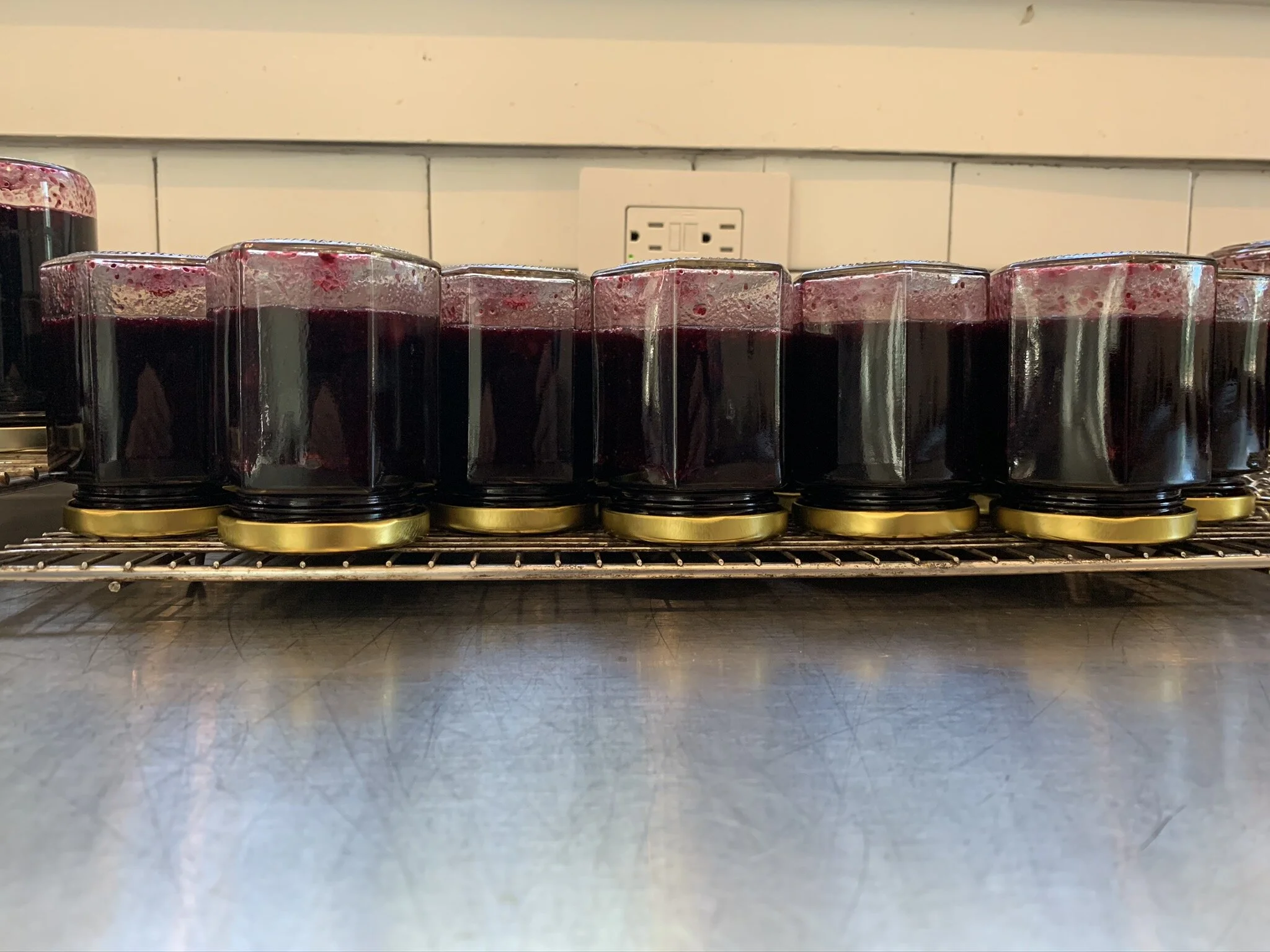Blueberry Jam Tutorial
There are plenty of recipes out there for jam, but we wanted to give you a few tips that will make yours stand out! We had a surplus of blueberries from our Summer harvest so we stored them in our freezer for us enjoy during the winter months!
So, what makes a jam delicious?
Its fresh taste! Even though it is a preserve, a great jam should have a bright fresh taste that feels stimulating and transports you to those joyful summer days. The keys to a superb jam are:
1) The Yummiest Fruit
We source our fruit from our farm where we take the best care of plants every step of the way. When harvest season begins, we diligently pick the berries every other day and harvest the fruit when it is perfectly ripe. For our blueberry jam, the berries are picked once they have fully turned black all around but before they become super ripe and soft and lose their turgidity.
2) Small batch
Why small batch? Cooking the jam in small batches reduces the cook time. The result is jam that retains its vibrant color and freshness. For blueberries, we suggest a batch of no more than 6 or 7 pounds of berries; this will cook in about 30 minutes.
3) Acidity
Acidity plays a big role in jam making. On one hand, it gives it that ‘kick’ that makes your mouth water and on the other hand, it helps the jam set. A good squeeze of a lemon or two will help the pectin congeal.
4) Pectin
We like to make this comparison – pectin is like the collagen in the human body, which is found mostly near the bones, in cartilage and connective tissue, and also in our skin. Interestingly, in fruits, it is concentrated around the seeds and the skins of fruit... It’s that gelatinous compound that we are after, which gives structure and binds the jam together.
We have never used store bought pectin in any of our jams. If you are working with fruit that is low in pectin like blueberries and strawberries, you can add some of your own homemade pectin. Just gather a few untreated lemons, cut’em in half, put them in a pot with water and simmer or keep at the lowest heat until they become soft, (about 3 hours) making sure the lemons stay covered in water at all times. They’ll soften by giving up all the “collagen” that held them firmly together while fresh. The resulting water is your pectin. Strain and use right away or freeze in ice-cube molds (which you can store in a freezer bag for whenever you are ready to crank out a batch of jam).
5) Perfect Temp
The jam is boiling when you see a train of bubbles (as shown in the video below). That means it’s getting close to the set point. The most reliable way of getting this right is by using a thermometer – 220 F, and it’s done! Or you can go with the cold plate test method. Drop a spoonful of jam on a fridge-cold plate and wait a few minutes for it to cool. (Turn the heat off while doing this!). Run your finger through the jam. When it leaves a trail and doesn’t readily come back together, it is done!
Happy Jammin!




